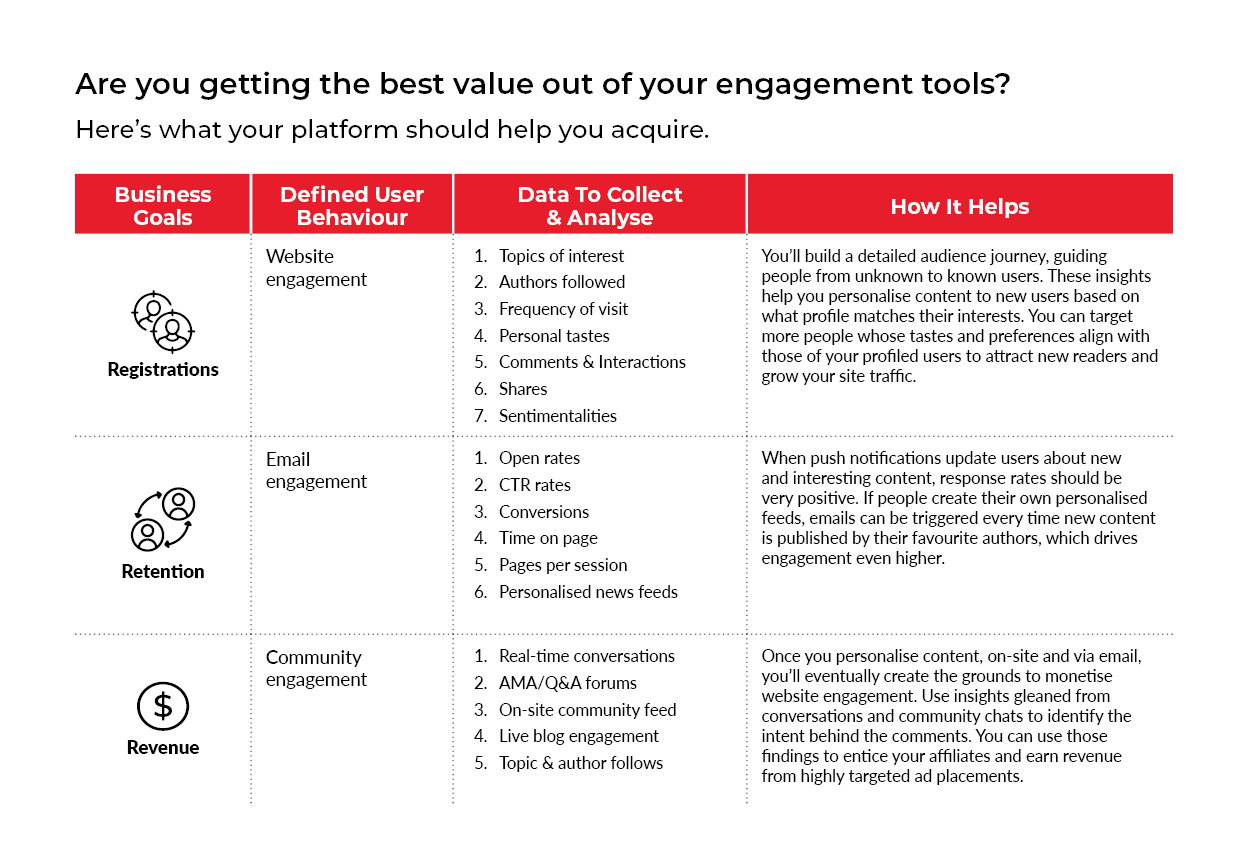Publishing in the digital age, not unlike advertising, has become a conversation between audiences and content providers. A conversation that’s full of opportunities to form substantial and lasting relationships, that is – as long as both sides stand to benefit from a value exchange. Through entertainment, information and fostering a sense of community, it’s up to publishers to give audiences something worthwhile for what they have to offer as digital individuals: unique, rich, first party data.
If publishers are able to create interest, garner engagement, and earn subscriptions and all the first party data that comes with them, they gain a huge advantage. Continued access to first party data will inform improvements to their audience development strategy and usher in new growth; growth in their following and subscriber base and inevitably a marked boost to ad and subscription revenues.
However, digital savvy consumers are hyper focused on protecting their privacy by knowing exactly who’s collecting their data and what it’s being used for. Just recently, fast food chain Tim Hortons came under fire for collecting data without proper consent. Users will typically agree to provide personal data only if they believe it’s worth what they get in exchange. This decision is what we refer to as a value exchange moment, a point in time where the end user decides if what they receive is worth their trust and, of course, their personal information.

While the value a publisher may traditionally provide is content, more and more we are seeing that community has become a huge draw for prospective subscribers. For example, a user who regularly engages with a publisher’s content has a higher propensity to become an active member of the publisher’s community by registering or subscribing. The social perks may vary, but a more nuanced value point is the sense of reassurance a trusted community gives to newcomers. When faced with a group of folks who share interests and values, all of whom consent to share their data with the publisher, anonymous but engaged users are likely to feel at ease when it comes to sharing their information. As publishers, it’s essential to provide high quality content to draw in leads, but the value of a thriving community to prospective subscribers is just as valuable when seamlessly guiding users toward registered and subscribed states.
Once anonymous users have been drawn in by interest-rich content and/or community, they agree to a value exchange and join the ranks of subscribers. With access to their audience’s first party data (e.g. how much time they spend on site, which pages they view, how they engage with sponsored content, etc.), publishers gain a far better understanding of their audience as individuals and cohorts alike. With this data, publishers need only keep their audience growth strategies and first party data strategies up to date in order to keep optimizing their content and retain registered users while continuing to recruit new subscribers.
Once immersed in the community, formerly anonymous but active engaged users become user generated content (UGC) contributors – another value point for prospects on the outside looking in. These contributors comment often and create posts of their own within the community, typically generating over 41 times more pageviews and 100 times the amount of ad impressions compared to anonymous users. As the numbers demonstrate in the funnel above, engagement improves exponentially as users move further along the registration process. By retaining user interest and engagement, publishers not only get closer to the value exchange moment that earns them subscriptions, but they also reap the rewards of substantial growth in impressions as their audience members move further along the funnel’s stages.
Publishers who understand that the potential to maximize their registration, retention, and revenue lies directly in this value exchange moment are on track to setting themselves up for success. So long as users – anonymous, engaged, or fully subscribed – are benefiting from a continued value exchange for their information, publishers can continuously use that self-replenishing well of information to improve their offerings and win big in both audience loyalty and business growth.















